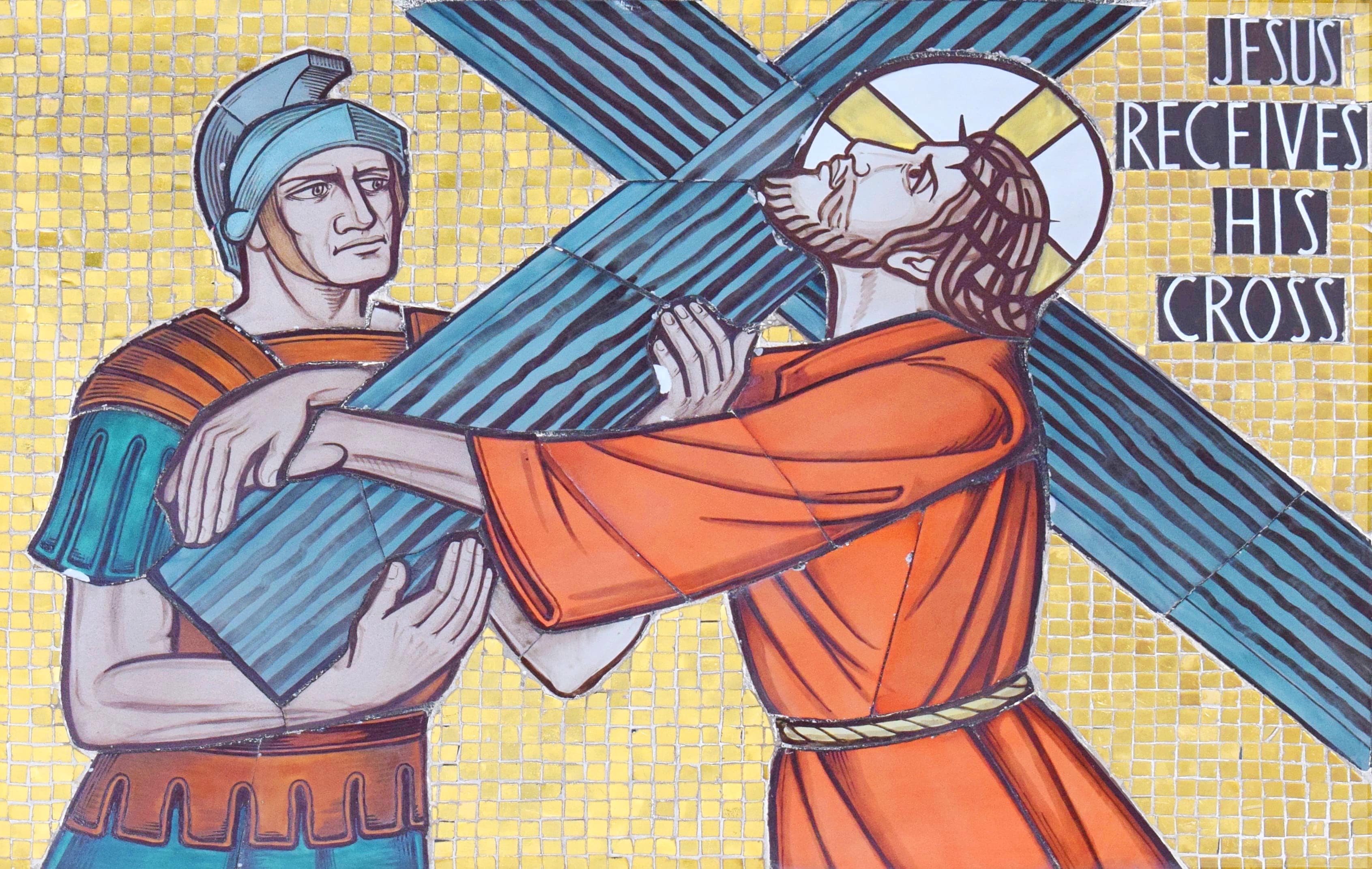After being sentenced to death, Christ was ordered to carry his cross to the hill outside Jerusalem where he was to be crucified. At the time, this was standard practice for criminals. Christ probably only carried the heavy cross-beam, rather than the entire cross. The beam would then have been fixed onto an upright stake that was already in place.
Christ’s journey from the Roman headquarters to outside the walls of Jerusalem gets only the briefest of factual mentions in Scripture (John 19:16-17). It describes how the soldiers made him carry his cross to a skull-shaped hill outside the city, which was called Golgotha (meaning ‘skull’ in Aramaic). In English this is known as Calvary, from the Latin word used in this verse, Calvariæ.
The act of Christ carrying the cross through the streets of Jerusalem is immortalised in the devotion of the ‘Stations of the Cross’. Fourteen images, telling the story of Christ’s journey to Calvary, are traditionally found around the walls of Catholic churches. They are most popular during Lent, when Catholics use them to meditate on the sufferings of Christ.
Reflecting on Christ receiving the cross, Pope St John Paul II observed: “It was not lawful to condemn a Roman citizen to death by crucifixion: it was too humiliating. The moment that Jesus of Nazareth took up the Cross in order to carry it to Calvary marked a turning-point in the history of the cross. The symbol of a shameful death, reserved for the lowest classes, the cross becomes a key. From now on, with the help of this key, man will open the door of the deepest mystery of God.”
He went on: “Through Christ’s acceptance of the Cross, the instrument of his own self-emptying, men will come to know that God is love. Love without limits: “God so loved the world that he gave his only Son, that whoever believes in him should not perish but have eternal life” (Jn 3:16). This truth about God was revealed in the Cross.”
The pope then asked: “Could it not have been revealed in some other way? Perhaps. But God chose the Cross. The Father chose the Cross for his Son, and his Son shouldered it, carried it to Mount Calvary and on it offered his life. In the Cross there is suffering, in the Cross there is salvation, in the Cross there is a lesson of love.” (Via Crucis, 2000)
This rectangular opus sectile image of Christ receiving the cross is found within the church of the Sacred Heart, Camberwell. The contrast between the gold background and the “comic-strip” style of the other tiles make this a particularly striking piece. The image pictures Christ raising his eyes heavenward as he receives the cross from a Roman soldier.
This scene illustrates the Second Station of the Cross; as usual there are another thirteen in a similar style around the walls of the church. The piece is attributed to Burns & Oates and probably dates to the construction of the church in the early 1950s.
See the full image:
 Burns & Oates / Second Station of the Cross / Opus sectile mosaic / 1950s
Burns & Oates / Second Station of the Cross / Opus sectile mosaic / 1950s
Where to find this work of art
Sacred Heart, Camberwell
Read the relevant passage
John 19:16-17
Find out more
Explore all 14 Stations
On a similar theme
- From the Old Testament: The episode when Isaac carried the wood to his death was traditionally understood as a sign of the Way of the Cross.
- From the New Testament: When the going became too hard, Simon of Cyrene was compelled to help Christ to carry the cross.

Hi
Just a small note – this is the 2nd station and not the 1st (which is Pilate condemning Christ to death)
LikeLiked by 1 person
Thanks for pointing this out 🙂
LikeLike